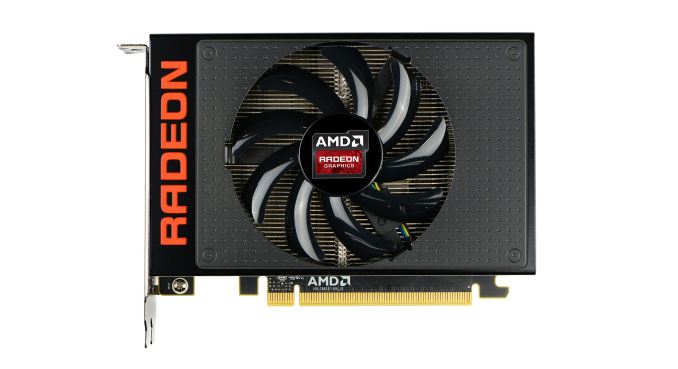AMD Cuts Price of Radeon R9 Nano to $499
by Ryan Smith on January 11, 2016 7:35 AM EST
Word comes from AMD via a press release this morning that they are giving the Radeon R9 Nano a price cut. AMD’s diminutive flagship, which launched in September 2015 at $649, is now the first Fiji card to get an official price cut, with AMD lowering the MSRP to $499 effective immediately.
The third card based on AMD’s flagship Fiji GPU, the Radeon R9 Nano was in a sense a culmination of AMD’s design goals for Fiji. Seeking to take full advantage of the compact packaging afforded by the use of High Bandwidth Memory, AMD packed a fully enabled Fiji into a Mini-ITX sized video card designed especially for small form factor systems. The resulting card was neither a performance flagship card like the Fury X nor a clear second-tier card like the regular Fury, but rather a third card that occupied its own niche within the PC market. This coupled with its unique power binning requirements led to it being launched as a micro-sized alternative to the full Fury X at the same $649 MSRP.
This marks the first instance of a significant price cut for a Fiji card – since their respective launches we’ve seen all three cards drift lower by only $50 or so – and that the card receiving a price drop is AMD’s most recently launched Fiji card is a bit surprising. From a price/performance perspective the Nano was essentially priced as a luxury card, with AMD banking on being able to charge a premium for its improved power efficiency and small size. Today’s price drop essentially puts an end to that, especially since the two Fury cards are not receiving a price cut of their own. With that said, the Nano’s power requirements call for what is arguably the best Fiji chip bin, so that adds another wrinkle to the entire situation.
More interesting perhaps is where this puts the R9 Fury (vanilla), which can already be found for as low at $499. The R9 Fury is only a few percent faster than the R9 Nano and noticeably more power hungry as well, so if the R9 Fury remains at $499 then it's hard to imagine the R9 Nano not being disruptive to R9 Fury sales.
Finally, it’s also worth noting that this comes just days after NVIDIA’s most recent game bundle announcement. Although not specifically addressed by AMD, this may be their response to that bundle in order to shore up their lineup against the similarly-priced GTX 980. Especially since this now places AMD's most power efficient card against NVIDIA's most efficient card, offering about 5% better performance for 5% higher power consumption.
| Winter 2016 GPU Pricing Comparison | |||||
| AMD | Price | NVIDIA | |||
| $629 | GeForce GTX 980 Ti | ||||
| Radeon R9 Fury X | $599 | ||||
| Radeon R9 Fury Radeon R9 Nano |
$499 | ||||
| $479 | GeForce GTX 980 | ||||
| Radeon R9 390X | $379 | ||||
| Radeon R9 390 | $299 | GeForce GTX 970 | |||










74 Comments
View All Comments
Oxford Guy - Wednesday, January 13, 2016 - link
Isn't there a DisplayPort adapter?7amood - Wednesday, January 13, 2016 - link
In the pricing comparison table, please stop using the 299 and 379 number. Round it to full numbers 300 and 380. This makes it easier to glance at.abufrejoval - Friday, January 15, 2016 - link
In my view the Nano is the only Fury which really matches HBM, because it delivers on the space and power saving potential. And after the price cut it sits well in the competitive landscape.I see it as an ideal upgrader's card, because I didn't have to upgrade the power supply, reroute cables or worry about water in the system, so I grabbed one pretty quick after the cut.
It's just as nice as you reported it to be: Delivers 4k supersampled game performance without ever becoming noisy or really hot. I haven't been able to get it to throttle below 900MHz or hotter than 75°C.
Sure, with Polaris it will be irrellevant very soon, so perhaps this time around they just want to clean out the inventory before the next generation hits the shelves.
abufrejoval - Friday, January 15, 2016 - link
Just ran Luxmark 3.1 on the Nano and got a 3902 score, which is somewhat higher than I expected after the Nano review here (was 3166 for the Nano and 3420 for the Fury X)....Turns out I was running it on a Kaveri 7850K which contributed its OpenCL power to the pool ;-)